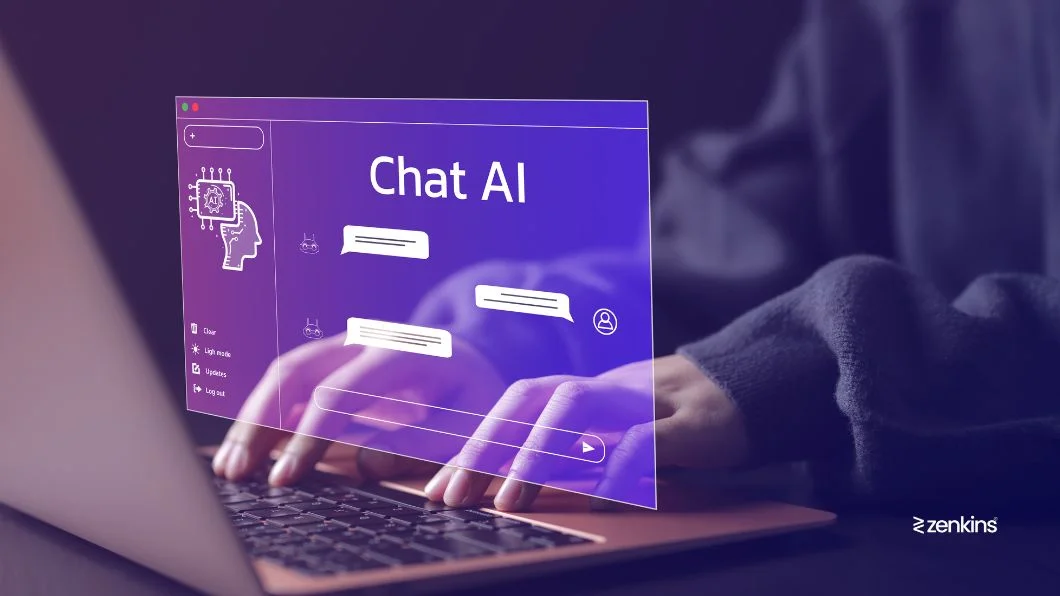Complete Guide to Integrating ChatGPT in .NET Core
Table of Contents
In the ever-evolving world of technology, integrating advanced AI models like OpenAI’s ChatGPT into your applications can greatly enhance user interactions. Whether you’re looking to build a chatbot, automate customer support, or create conversational interfaces, integrating ChatGPT with .NET Core offers a powerful solution. This guide will walk you through the process of integrating ChatGPT into a .NET Core application, from setting up your environment to deploying your AI-powered solution.
Why Integrate ChatGPT with .NET Core?
.NET Core is a versatile, cross-platform framework used for building modern, cloud-based, and internet-connected applications. By integrating ChatGPT, you can leverage the power of natural language processing (NLP) to create intelligent, context-aware applications that understand and respond to user inputs in a human-like manner.
Key benefits include:
- Enhanced User Experience: ChatGPT can provide more natural and engaging interactions, improving customer satisfaction.
- Automation: Automate routine tasks, such as answering FAQs, providing recommendations, or assisting with complex queries.
- Scalability: .NET Core’s scalability combined with ChatGPT’s capabilities allows for the creation of applications that can grow with your needs.
Prerequisites
Before you begin, ensure you have the following:
- .NET Core SDK: Download and install the latest version of .NET Core SDK from the official website.
- Visual Studio or VS Code: Use your preferred integrated development environment (IDE) for developing .NET Core applications.
- OpenAI API Key: Sign up for an API key from OpenAI. This key will allow you to access the ChatGPT model.
- Basic Knowledge of C#: Familiarity with C# and .NET Core is essential for following this guide.
Step 1: Setting Up Your .NET Core Project
Start by creating a new .NET Core console application. Open your terminal or command prompt and run the following command (bash/cmd command):
dotnet new console -n ChatGPTIntegration
Navigate to the project directory (bash/cmd command):
cd ChatGPTIntegration
Open the project in your IDE. You’ll see a basic Program.cs file. This is where you’ll be writing the code to interact with ChatGPT.
Step 2: Installing Required NuGet Packages
To interact with the OpenAI API, you’ll need to install a few NuGet packages. These packages will help you make HTTP requests and handle JSON responses.
Run the following commands to install the necessary packages:
dotnet add package RestSharp
dotnet add package Newtonsoft.Json
- RestSharp is a simple REST and HTTP API client for .NET.
- Newtonsoft.Json is a popular high-performance JSON framework for .NET.
Step 3: Creating a Service to Interact with ChatGPT
Next, you’ll create a service class that will handle communication with the ChatGPT API. In your project, add a new class named ChatGPTService.cs.
Here’s the basic structure:
using System;
using System.Threading.Tasks;
using Newtonsoft.Json;
using RestSharp;
public class ChatGPTService
{
private readonly string apiKey;
public ChatGPTService(string apiKey)
{
this.apiKey = apiKey;
}
public async Task<string> GetChatGPTResponse(string prompt)
{
var client = new RestClient("https://api.openai.com/v1/completions");
var request = new RestRequest(Method.POST);
request.AddHeader("Authorization", $"Bearer {apiKey}");
request.AddHeader("Content-Type", "application/json");
var requestBody = new
{
model = "text-davinci-003",
prompt = prompt,
max_tokens = 150,
temperature = 0.7
};
request.AddParameter("application/json", JsonConvert.SerializeObject(requestBody), ParameterType.RequestBody);
var response = await client.ExecuteAsync(request);
if (response.IsSuccessful)
{
dynamic jsonResponse = JsonConvert.DeserializeObject(response.Content);
return jsonResponse.choices[0].text;
}
else
{
throw new Exception("Failed to get a response from ChatGPT.");
}
}
}
This service sends a prompt to the ChatGPT API and returns the generated text. You’ll need to replace "text-davinci-003" with the specific model version you’re using, and adjust the max_tokens and temperature parameters according to your needs.
Step 4: Using the ChatGPT Service in Your Application
Now that the service is ready, you can use it in your Program.cs file. Here’s how to set it up:
using System;
using System.Threading.Tasks;
class Program
{
static async Task Main(string[] args)
{
Console.WriteLine("Enter your OpenAI API key:");
string apiKey = Console.ReadLine();
var chatService = new ChatGPTService(apiKey);
Console.WriteLine("Ask ChatGPT something:");
string prompt = Console.ReadLine();
string response = await chatService.GetChatGPTResponse(prompt);
Console.WriteLine("ChatGPT says: ");
Console.WriteLine(response);
}
}
When you run the application, it will prompt you to enter your API key and a question or prompt for ChatGPT. The application will then display the response generated by ChatGPT.
Step 5: Testing Your Application
To test your application, run the following command(bash/cmd command):
dotnet run
Enter your API key when prompted, and type a question or command. The application will return a response from ChatGPT.
For example:
- Input: “What is the capital of France?”
- ChatGPT Response: “The capital of France is Paris.”
Step 6: Enhancing the ChatGPT Integration
You can enhance your ChatGPT integration by adding more features, such as:
- Contextual Conversations: Modify the service to maintain conversation context by storing previous prompts and responses.
- Custom AI Models: Use different models or fine-tune a model on specific datasets to better suit your application’s needs.
- UI Integration: If you’re building a web or desktop application, integrate the service with a user interface for a more interactive experience.
Step 7: Deploying Your Application
Once you’re satisfied with your application, you can deploy it to a server or cloud platform like Azure. .NET Core applications can run on various platforms, making deployment flexible.
For deployment, consider:
- Azure Web App: Deploy your .NET Core application as a web app on Azure.
- Docker: Containerize your application using Docker and deploy it to any cloud provider.
- CI/CD Pipelines: Use Azure DevOps or GitHub Actions to automate deployment and updates.
Best Practices for Integrating ChatGPT in .NET Core
- API Key Management: Store your OpenAI API key securely, using environment variables or secret management tools.
- Rate Limiting: Be mindful of API rate limits to avoid hitting usage caps, especially in production environments.
- Error Handling: Implement robust error handling to manage API failures or unexpected responses.
- Monitoring and Logging: Keep track of API calls and responses to monitor application performance and debug issues.
Conclusion
Integrating ChatGPT with .NET Core opens up a world of possibilities for building intelligent, conversational applications. Whether you’re enhancing a customer service app, creating an educational tool, or developing a virtual assistant, this guide provides the foundation to get started.
By following the steps outlined above, you can successfully integrate ChatGPT into your .NET Core applications, delivering a richer, more interactive user experience. As AI continues to evolve, staying ahead with such integrations will keep your applications innovative and competitive.
FAQs
What is ChatGPT, and why should I integrate it with .NET Core?
ChatGPT is an AI language model developed by OpenAI, capable of understanding and generating human-like text. Integrating it with .NET Core allows you to build intelligent, conversational applications that can interact with users naturally.
What are the prerequisites for integrating ChatGPT with .NET Core?
You need to have .NET Core SDK installed, an IDE like Visual Studio or VS Code, an OpenAI API key, and a basic understanding of C# and .NET Core.
How do I obtain an API key from OpenAI?
You can sign up for an API key on the OpenAI website. Once registered, you’ll receive a key that allows your application to interact with the ChatGPT model.
Which NuGet packages are required for integrating ChatGPT with .NET Core?
You’ll need to install the RestSharp package for HTTP requests and Newtonsoft.Json for handling JSON data.
Can I customize the ChatGPT model when integrating with .NET Core?
Yes, you can choose different versions of the model and adjust parameters like max_tokens and temperature to control the output of ChatGPT.
How do I handle errors when communicating with the ChatGPT API?
Implement robust error handling in your code to manage API failures, unexpected responses, or network issues.
Can I maintain conversation context with ChatGPT in .NET Core?
Yes, by storing previous prompts and responses, you can maintain the context of a conversation across multiple interactions.
What are the best practices for managing API keys in .NET Core?
Store API keys securely using environment variables or secret management tools to prevent unauthorized access.
How do I integrate ChatGPT into a user interface in .NET Core?
You can integrate the ChatGPT service with a web or desktop UI to provide a more interactive experience for users, using frameworks like Blazor or WPF.
Is it possible to deploy a .NET Core application with ChatGPT integration to the cloud?
Yes, you can deploy your application to cloud platforms like Azure, using services like Azure Web App or containerizing it with Docker.
What are the advantages of using .NET Core for ChatGPT integration?
.NET Core is cross-platform, scalable, and well-suited for building modern, cloud-based applications that can easily integrate with AI models like ChatGPT.
Can I use ChatGPT in a mobile application developed with .NET Core?
Yes, you can use ChatGPT in mobile applications by integrating it with Xamarin or .NET MAUI, which are frameworks for building cross-platform mobile apps.
How do I monitor the performance of my ChatGPT-integrated .NET Core application?
Implement logging and monitoring tools to track API usage, response times, and potential errors to ensure optimal performance.
What are the API rate limits for ChatGPT, and how do I manage them?
OpenAI imposes rate limits on API usage, which vary depending on your subscription. Implement rate limiting in your code to avoid hitting these caps.
Can I use other AI models with .NET Core besides ChatGPT?
Yes, .NET Core supports integration with various AI models, including those from Azure Cognitive Services, Google AI, and more.
How do I handle large-scale deployments of ChatGPT-integrated applications?
Use cloud services like Azure for scalable infrastructure and consider implementing load balancing and caching strategies to manage high traffic.
What types of applications benefit the most from integrating ChatGPT?
Applications that require natural language understanding, such as chatbots, virtual assistants, customer support tools, and educational platforms, benefit greatly from ChatGPT integration.
Is there a limit to how much text I can send to ChatGPT in a single request?
Yes, the max_tokens parameter controls the length of the input and output text. You may need to split long inputs into multiple requests.
How do I secure user data when using ChatGPT in .NET Core?
Ensure data is encrypted in transit and at rest, comply with data protection regulations, and use secure authentication methods for API access.
What are the future trends in AI integration with .NET Core?
The future will likely see more advanced AI models, deeper integration with cloud services, and the development of increasingly sophisticated conversational applications.





